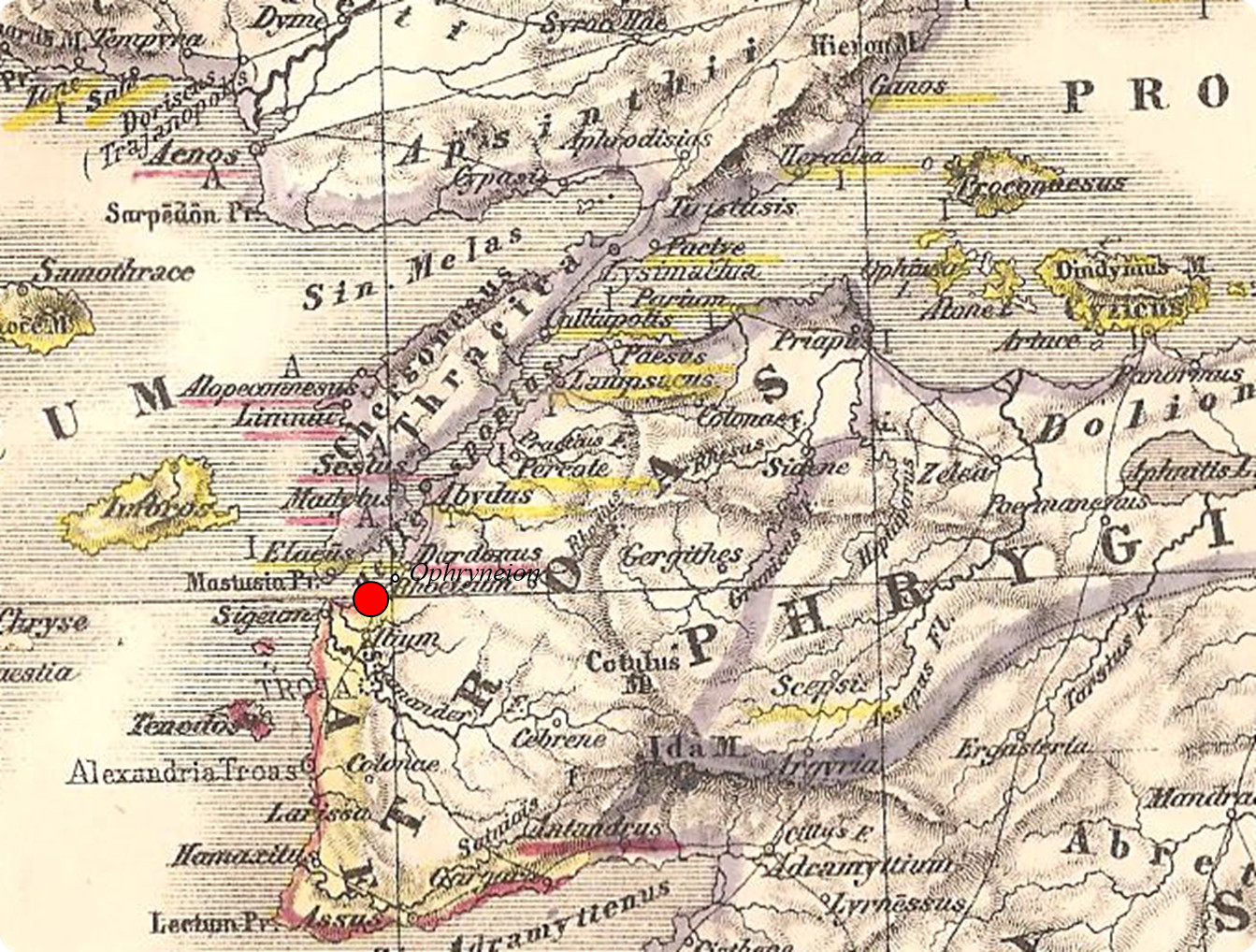
Kiepert Atlas Antiquus, Dietrich Reimer, Berlin, 1863
|
According to the Greek geographer Strabo of the Augustan era, Rhoiteion
was founded by Astypalaians at some point following the fall of
Troy.[2] A scholion on the text of Apollonius of Rhodes explained the
origin of the name as referring to Rhoiteia, daughter of Proteus, but
scholars consider this etymology to be spurious.[3] Surface surveys
conducted in 1959 and 1968 suggest that the site was occupied by Greeks
from at least the late 8th century BC. The earliest source to mention Rhoiteion is the 5th century BC historian Herodotus who mentions it as one of the cities Xerxes marches past with the Persian army on his way to Greece in 480 BC. At a similar period to when Herodotus was writing, the Mytilenaean logographer Hellanicus referred to Rhoiteion's history in Book 1 of his Τρωϊκά (Troika, a history of Troy), stating that following the sack of Ilium, Rhoiteion and nearby Sigeion had divided the fallen city's territory between them. Rhoiteion was one of the Actaean cities which Mytilene lost control of following the end of the Mytilenean revolt in 427 BC. In spring 424 BC, the exiles from Mytilene seized Rhoiteion, but returned control of it to Athens when they were paid a ransom of 2,000 Phokaian staters. Rhoiteion's greatest asset was the suitability of its coast for harbouring ships and its location on the Hellespont which connected the Black Sea to the Aegean Sea vis the Sea of Marmara; when it appears in the sources, it is usually for this reason. Famously, its coast was where the Achaeans beached their ships. The Peloponnesian fleet put in here in the summer of 411 BC, and in 409 BC the Athenian fleet beached along these shores, sheltering from the winter storms. The promontory of Aeantion in the west of Rhoiteion's territory was commonly used as a harbour in Roman times: in Philostratus' Life of Apollonius of Tyana, written in the late 2nd century AD, Apollonius finds many ships at anchor here and takes passage on one, and in AD 324 the fleet of Licinius spent the night at anchor here before going into battle against Crispus. In modern times, locals have referred to most of the bays along this coast at one time or another as Karanlık Limanı (Turkish ‘concealed harbour’). Outside the myth of the tomb of Ajax, Rhoeteion is rarely mentioned after the Classical period. In 335 BC, prior to Alexander the Great's victory at the nearby Granicus river, one of his commanders, Calas, was beaten back by the Persians and forced to take temporary refuge at Rhoiteion. In the 3rd century BC, a Μοιρίας Ἀντιφάνου Ῥοιτεύς ('Moirias the son of Antiphanes, citizen of Rhoiteion') is honoured as a proxenos in an inscription from Delos. In 190 BC, the Roman commander Livius captured Rhoiteion from the Macedonian forces. Soon after, in 188 BC following the Treaty of Apamea, Rhoiteion was part of the Hellenistic Kingdom of Pergamon, and under the sway of Ilium. At the beginning of the Hellenistic period Rhoiteion may have moved 1.8 km to the south-west from the Baba Kale spur to a site known as Tavolia (40°00′03″N 26°16′53″E) and remained there throughout the Roman period. |
